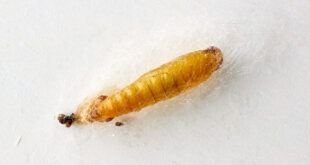Music and poetry have long been a very important part of my life. In fact doing those handyman jobs around the home is often made more pleasurable when listening to either raucous Irish folk music or the gentle sounds of a great orchestral piece. Why am I raving on like this? Well this time of year we are going through a change of seasons and like all thing in the universe this change affects all things, inanimate or living. So before I get into the DIY mode always remember the part from Desiderata that goes: “You are a child of the universe no less than the trees and the stars; you have a right to be here”.
All this leads to the fact that as winter moves into spring its time for the home owner to do a check around his or her property for any damage caused by the depredation of winter.
So with pencil poised and notebook ready lets have a good look around the exterior of your property.
Check your pathways, particularly if they are made of concrete and the weather in your area gets frosty. If the concrete is chipped, cracked or the edges have pieces broken off, a repair may be necessary. Repairs to small cracks and crevices have been notoriously difficult to repair in the past using a cement mortar mixture however these days you can buy a variety of repair kits. One I have used to great effect is Sika Mix and Go which comes in a small easy to use pack and even has a spatula included! All you have to do is add water, mix and apply. If you need a really extra strong repair, two pot epoxy putty repair kits are available that have excellent non sag properties for vertical or overhead work.
Discolouration of walls and pathways by moss, mould and lichen is one of the most visible signs of lack of maintenance over the winter period. Slippery slimy growth on a path way can be lethal to people walking on the surface.
Cleaning outdoor surfaces contaminated in this way is much easier these days with many proprietary brands of cleaners on the market. One of the really good products available is a product called Spray & Away this is a product that literally lives up to its name. Simply follow the mixing instructions, fill up your garden sprayer, spray the offending areas and that’s all you have to do. Over a period of time and with the help of mother natures rain the product works away to clean the surface. Some even better news this product is available directly from the supplier so its great value for money and secondly they are now an approved Super Gold Card Supplier and this means you qualify for a 15% discount on all of their products! Look at www.h7.co.nz for more information. I must make a very important point here and that is I do not get paid or told to promote any products I will only pass on the names of products that I have tried myself and find do the job or give excellent results, I’m not easily impressed!
Having said that, and being a bit of a ‘greenie’ in my old age I recommend you try Interceptor Organic Weed Killer from the same company. It’s brilliant!
If however you believe in hard work and want to use a more traditional method then use a Water Blaster. Nowadays you can purchase small units from your local hardware store that are ideal for use around the home without breaking the bank. Water is supplied to the unit via a garden hose in most domestic units. The waterblaster then sprays the water out under high pressure which in turn blasts dirt and contaminates off the surface you are cleaning. Usually the bigger the jobs you will be doing the higher pressure unit you will need. One thing to be aware of when using a water blaster is that you do not kill the spores that cause that slippery slimy moss and mildew you simply disperse them over a wider area.
Cleaning the surface is only part of the job you also need to make sure that moss and mildew has not grown in what would normally be a dry area. Moss and mould will only usually grow in areas of damp and moisture. So when you see it growing on walls it pays to check for leaking guttering, or maybe your down pipes from the roof have been blocked during the winter months causing water to run down the walls. Also check for any other source of moisture that has allowed the moss and mildew to survive. It may be as easy as cutting back bushes, overhanging trees or other forms of vegetation.
It also pays to check and clean your gutters and downpipes even if you can’t see any areas of damp on the walls. Gutters need to be cleaned out at least twice a year as they seem to be a magnet for leaves, bird’s nests, rubbish and anything else borne by the wind. The result is that blockages are formed and water cannot flow freely through the gutters and downpipe.
To clean your gutters you will need:
A good solid ladder that will reach the roof safely and is fitted with a ‘stand off bracket’ to prevent damaging the gutters. (If you are unsure about your ladder talk to the experts at your local hardware store, they will advise you).
A small trowel, or a scoop, that will fit nicely inside the gutters to scoop out the rubbish. I made mine out of an old plastic (PET) drink bottle. All you have to do is lay the bottle on its side, measure about 75 to 100 mm from the bottom of the bottle and cut back to the bottom to form a scoop. Then you use the neck of the bottle as a handle.
A plastic bucket.
The garden hose will be useful.
Some old rags
Set up your ladder correctly and take the appropriate safety precautions, you will need to start working near your down pipe(s).
First block your down pipe at the top with an old piece of rag, this is to prevent the debris you loosen getting into the pipe and possibly blocking it.
Now you can start to carefully remove any dirt, leaves or rubbish from the gutters using your scoop and putting it into your bucket. Work your way around the house emptying the bucket frequently. When you have finished remove the rag from the down pipes and sluice out the gutters using either your garden hose or buckets of water. The water should run freely through the gutters, if it runs slowly or not at all then you probably have a blocked down pipe. The easiest pipes to work on are the plastic variety as they are very simple to dismantle and clean out. So unless you have noticed where the blockage may be, due to leakage in the rain, start at the bottom of the pipe. Remove the screws and pipe clips from a section at a time and then raise each section of pipe to free it from the one below. Clean out all the sections using long pieces of wood or wire and wash out with a garden hose. Reassemble the down pipe in the reverse order. (From the top to the bottom.)
Other pipe systems that are not so easy to dismantle will need to be cleared by other means. If the blockage is near the top or bottom of the pipe, poking with a length of strong wire will sometimes be successful, old wire coat hangers are useful for this job. After clearing the blockage wash out with water. Depending on the circumstances and shape of your down pipe it may be possible to feed a garden hose up the pipe from the bottom and then turn the water on full, this can be very successful. If all else fails your local hardware store will have a range of value for money drain snakes available.
You can also take precautions to help prevent blocked gutters, the most common method is to use one of the propriety brands of plastic mesh designed to prevent debris getting into the guttering. A very easy to use product is Nylex gutter guard. However whilst the plastic mesh will stop leaves and other rubbish getting into the gutter I have known cases where this debris will lodge itself in the mesh and in extreme circumstances reduce the ease in which water can get into the gutters. This in turn could cause the rain water to overflow down the walls create further problems. Therefore as I said at the beginning it still pays to check the system at least twice a year to be safe.
Other areas worthwhile checking on your walk around are:
Windows and window frames. On wooden windows check that the putty holding the glass is sound. If it’s loose or crumbling or badly cracked it needs replacing.
Check the rubber seals on metal window frames for signs of cracking, shrinking or any sign of deterioration. Replace as required.
Decks, fences and any other wooden outdoor structure should be checked for signs of rot, loose parts or nails ‘popping’ above the surface. Also make a note of what areas will need to be repainted during the warmer months of spring.
Its also a good time to clean your BBQ of the goop left on since summer.
Of course I’ve only scratched the surface of some of the tasks that you may need to complete around the exterior of your home after winter if you have any specific problems please contact me with your question on this website.
Email Chris with any DIY questions and queries you may have.
Click here to see Chris' Q&A page.









Jamyjane - 16 years ago
Brilliant. Very useful information